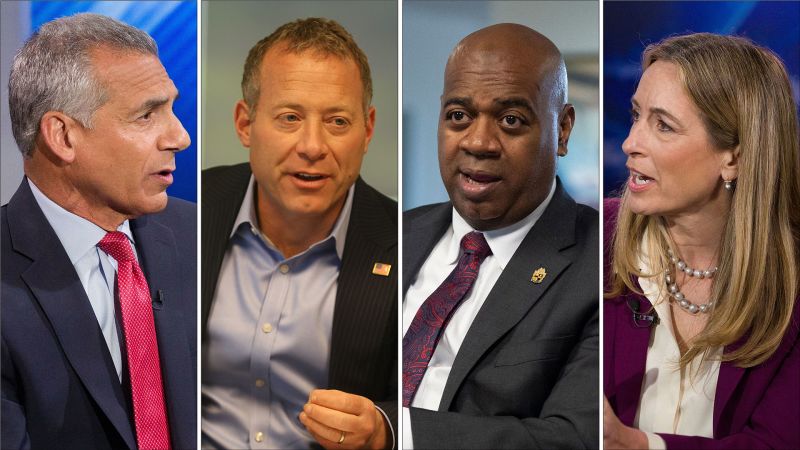New Jersey is gearing up for a critical political moment as voters prepare to select their nominees for the gubernatorial race on Tuesday. This election is pivotal for assessing the ideological trajectories of both the Democratic and Republican parties in a state that noticeably leaned towards then-President Donald Trump in the 2024 election. The dynamic landscape of New Jersey politics suggests that this gubernatorial primary is not to be underestimated, especially given its implications for forthcoming general elections.
On the Republican side, the race has crystallized around candidate Jack Ciattarelli, who had already established himself as a frontrunner prior to receiving Trump’s endorsement last month. This noteworthy endorsement has the potential to significantly bolster Ciattarelli’s campaign. In contrast, the Democratic primary is marked by a crowded field featuring a mix of moderate and progressive candidates vying for attention, with Representative Mikie Sherrill recognized by many political observers as the leading competitor. Both parties are wrestling with the influence of Trump as they prepare for the general election, especially given his impactful record in New Jersey, where he managed to reduce his loss to the Democratic nominee Kamala Harris in 2024 compared to previous runs.
The upcoming election will see candidates compete to succeed the term-limited Democratic Governor Phil Murphy. Historically, New Jersey Democrats have not managed to secure the governor’s seat for three consecutive terms in over sixty years, creating a precarious situation for the party. However, there is a silver lining; analysis reveals that in nearly every gubernatorial election since 1989, with the exception of 2021, the party that lost the presidential election the previous year typically rebounds to win in New Jersey. The results of this primary could signify an essential pivot for the party’s historical cycles.
New Jersey stands out as one of only two states, alongside Virginia, holding gubernatorial elections this year. Unlike Virginia, which has a clear matchup between Democrat Abigail Spanberger and Republican Winsome Earle-Sears, New Jersey’s primary season is more competitive and warrants close observation. Voter turnout and the choice of candidates could echo broader sentiments within the electorate, especially regarding pressing issues like housing affordability, immigration, and the rising cost of living.
When examining the Democratic candidates, Sherrill stands out due to her extensive outreach and the number of county party endorsements she has received. A former Navy helicopter pilot, Sherrill famously flipped a long-held Republican district in northern New Jersey during the 2018 elections, thereby assisting the Democratic party in regaining control of the House during Donald Trump’s first term. Her main competitor, Newark Mayor Ras Baraka, positions himself as a hardline progressive, leveraging his experiences dealing with the Trump administration, particularly on immigration issues. Other notable candidates include Jersey City Mayor Steve Fulop—a self-identified anti-establishment progressive—and Congressman Josh Gottheimer, who emphasizes the necessity of addressing the high living costs as a key platform issue.
In contrast, the Republican primary is underscored by the unexpected alignment of Jack Ciattarelli and Donald Trump. Ciattarelli, who earlier expressed disparagement toward Trump, is now actively courting the former president’s supporters in hopes of leveraging that constituency as he faces potential challenges ahead in the general election. His fellow Republicans, including local radio host Bill Spadea and state Senator Jon Bramnick, have adopted different approaches, with some attempting to connect with Trump’s appeal while others keep their distance.
Added complexity arises with the recent abolishment of New Jersey’s “county line” ballot system—an electoral structure previously designed to favor party-endorsed candidates. A federal ruling ended this practice, further leveling the playing field for candidates, resulting in one of the most competitive primaries the state has seen in years. The impact of spending has also been felt heavily, with total expenditures surpassing $85 million, making this not only a critical election but also the most expensive gubernatorial race in New Jersey’s history.
As election day approaches, the strategies and choices made by both Republican and Democratic candidates in New Jersey will unveil important details about the state’s political landscape, revealing voter sentiments that could echo through future elections both locally and nationally. With the stakes so high, political analyses point to a significant era of change that may redefine alliances, electability, and party dynamics in the Garden State.



